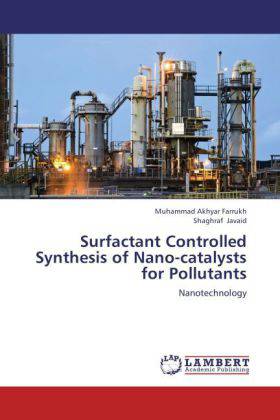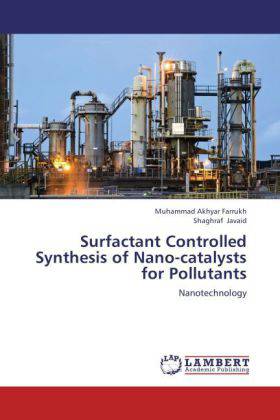
- Afhalen na 1 uur in een winkel met voorraad
- Gratis thuislevering in België vanaf € 30
- Ruim aanbod met 7 miljoen producten
- Afhalen na 1 uur in een winkel met voorraad
- Gratis thuislevering in België vanaf € 30
- Ruim aanbod met 7 miljoen producten
Zoeken
Surfactant Controlled Synthesis of Nano-catalysts for Pollutants
Nanotechnology
Muhammad Akhyar Farrukh, Shaghraf Javaid
Paperback | Engels
€ 60,95
+ 121 punten
Omschrijving
Tin oxide nanoparticles were prepared by hydrothermal method using octadecylamine surfactant as a templating agent. The synthesis was carried out at different concentration of surfactant keeping all other reaction conditions constant i.e time, intensity and temperature. The particle size decreases with the increase in concentration of surfactant up to critical micelle concentration (CMC). After CMC, increase in particle size occured with the increase in concentration of surfactant and this was attributed to the formation of micelles. The nanoparticles were applied as nanocatalyst under UV and visible light for the photodegradation of methylene blue (MB) dye, which is an environmental hazardous material of industrial waste water. The graphs of pseudo first order were plotted as a function of irradiation time to quantify the degradation activity. The nanoparticles were characterized by Fourier Transmission Infrared Spectroscopy (FTIR), Scanning Electron Microscopy (SEM), Transmission Electron Microscopy (TEM), X-ray Diffraction (XRD) and TGA (Thermogravimeteric Analysis).
Specificaties
Betrokkenen
- Auteur(s):
- Uitgeverij:
Inhoud
- Aantal bladzijden:
- 84
- Taal:
- Engels
Eigenschappen
- Productcode (EAN):
- 9783659225123
- Verschijningsdatum:
- 29/08/2012
- Uitvoering:
- Paperback
- Afmetingen:
- 152 mm x 229 mm
- Gewicht:
- 136 g

Alleen bij Standaard Boekhandel
+ 121 punten op je klantenkaart van Standaard Boekhandel
Beoordelingen
We publiceren alleen reviews die voldoen aan de voorwaarden voor reviews. Bekijk onze voorwaarden voor reviews.








